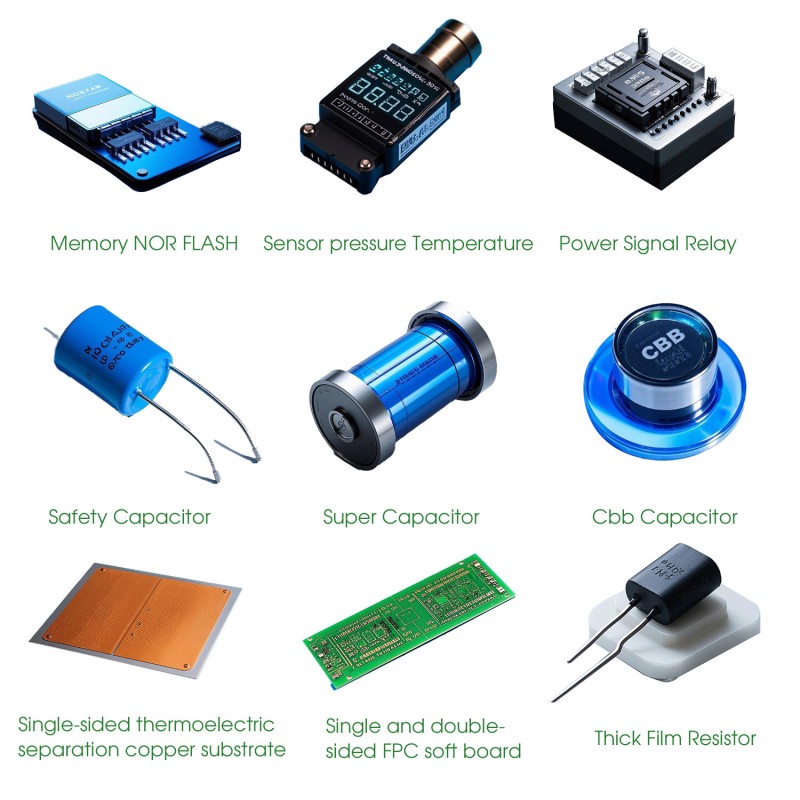
 English
English  Español
Español Português
Português русский
русский Français
Français 日本語
日本語 Deutsch
Deutsch tiếng Việt
tiếng Việt Italiano
Italiano Nederlands
Nederlands ภาษาไทย
ภาษาไทย Polski
Polski 한국어
한국어 Svenska
Svenska magyar
magyar Malay
Malay বাংলা ভাষার
বাংলা ভাষার Dansk
Dansk Suomi
Suomi हिन्दी
हिन्दी Pilipino
Pilipino Türkçe
Türkçe Gaeilge
Gaeilge العربية
العربية Indonesia
Indonesia Norsk
Norsk تمل
تمل český
český ελληνικά
ελληνικά український
український Javanese
Javanese فارسی
فارسی தமிழ்
தமிழ் తెలుగు
తెలుగు नेपाली
नेपाली Burmese
Burmese български
български ລາວ
ລາວ Latine
Latine Қазақша
Қазақша Euskal
Euskal Azərbaycan
Azərbaycan Slovenský jazyk
Slovenský jazyk Македонски
Македонски Lietuvos
Lietuvos Eesti Keel
Eesti Keel Română
Română Slovenski
Slovenski
How Do I Select the Perfect Resistor for My LED Circuit
2025-11-17
Hey there! As someone who's spent twenty years in the electronics component industry, I've guided countless engineers and hobbyists through one fundamental challenge - picking the right resistor to protect their LED investments. I've seen the frustration when LEDs burn out prematurely or shine too dimly, often because that small but crucial component wasn't properly matched. At Greeting, we've made it our mission to ensure you never face these issues again. Let me share the professional approach we've developed at Greeting to make resistor selection straightforward and reliable.
What Exactly Does a Resistor Do for My LED
Many beginners treat resistors as an afterthought, but they're actually your LED's best protection. An LED without a proper resistor is like a car engine without a speed limiter - it might work briefly before burning out spectacularly. The resistor actively controls current flow, ensuring your LED receives just the right amount of power to shine brightly while maintaining a long operational life. This fundamental understanding forms the basis of how we approach Resistor Components selection at Greeting.
Which Key Parameters Must I Calculate First
Before selecting any component, you need three essential values. I always recommend writing these down before starting your calculations:
-
Your power supply voltage (V_s) - typically 5V, 9V, or 12V
-
Your LED's forward voltage (V_f) - usually 1.8-3.3V depending on color
-
Your desired forward current (I_f) - commonly 20mA for standard LEDs
The calculation follows Ohm's Law: R = (V_s - V_f) / I_f
Can You Walk Me Through a Real Calculation Example
Let me share a recent example from our Greeting technical support team. A customer was creating an automotive project using a 12V power source with blue LEDs (V_f = 3.0V) at 20mA current.
The calculation worked out as:
R = (12V - 3.0V) / 0.02A = 450Ω
Since 450Ω isn't a standard value, we recommended our 470Ω Resistor Components from the Greeting premium line, which provides a safe margin that extends LED lifespan.
What About Power Rating - Does It Really Matter
This is where many projects fail. Resistors convert excess power to heat, and if you ignore power rating, you'll end up with damaged components. The power calculation is straightforward: P = (V_s - V_f) × I_f
Using our previous example:
P = (12V - 3.0V) × 0.02A = 0.18W
Our standard ¼W (0.25W) Resistor Components handle this comfortably, but for higher-power applications, we recommend our Greeting ½W series for added safety margin.
How Do I Choose Between Different Types of Resistor Components
The market offers various resistor types, each with distinct advantages. Through extensive testing, our engineering team at Greeting has developed this practical guide:
| Application Scenario | Recommended Type | Key Advantage |
|---|---|---|
| General purpose LEDs | Carbon Film | Cost-effective reliability |
| Precision lighting | Metal Film | Superior accuracy |
| High-power arrays | Wirewound | Excellent heat dissipation |
| Space-constrained projects | Surface Mount | Compact footprint |
For most LED applications, our Greeting carbon film Resistor Components provide the perfect balance of performance and value.
Have I Considered All Circuit Configurations
Your resistor needs change based on how you connect multiple LEDs. For series connections, calculate total voltage drop across all LEDs first. For parallel setups, each LED branch needs its own resistor - never use a single resistor for multiple parallel LEDs, as current imbalance will inevitably occur. This is why we emphasize proper Resistor Components selection in all our Greeting application guides.
What Final Checks Should I Perform Before Finalizing My Design
Before committing to your design, always:
-
Double-check your calculations
-
Verify resistor power rating adequacy
-
Consider environmental factors like temperature
-
Test with actual components when possible
Our Greeting technical team consistently finds that these simple verification steps prevent the majority of LED circuit failures.
I hope this professional perspective helps you approach your next LED project with greater confidence. The right Resistor Components make all the difference between a prototype that works temporarily and a design that stands the test of time. We at Greeting are committed to providing not just components, but comprehensive solutions. Have a specific project challenge? Our engineering support team is ready to help. Contact us today with your component requirements - let's discuss how our Resistor Components can bring reliability and excellence to your designs.





